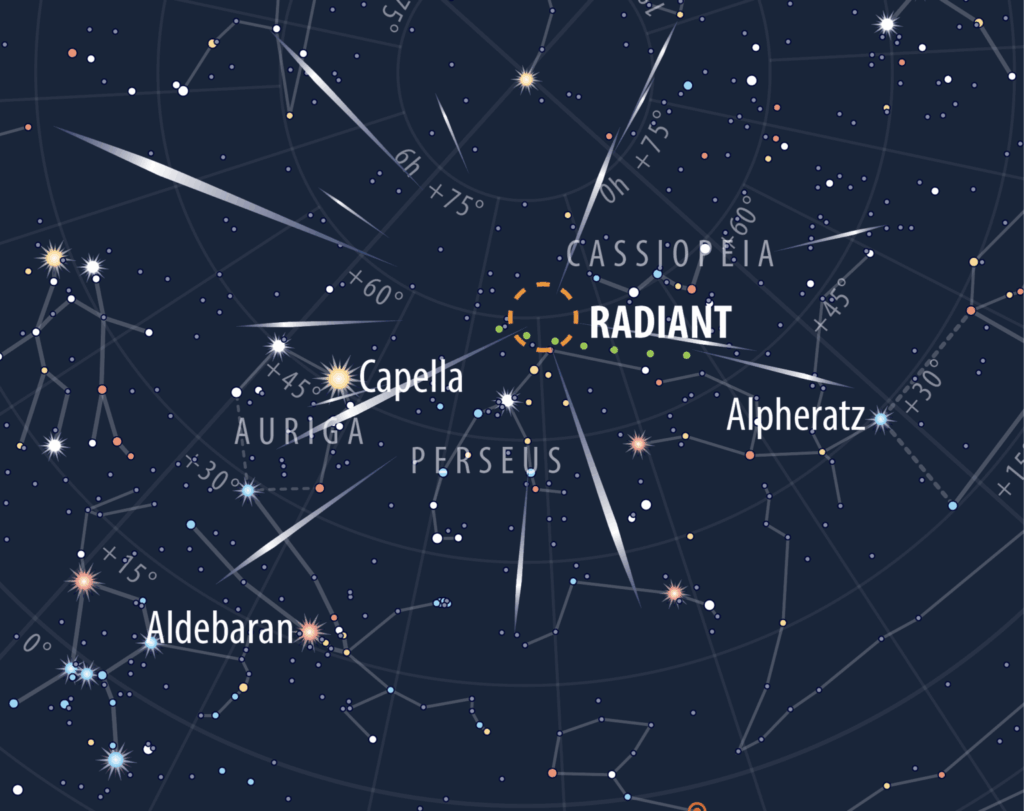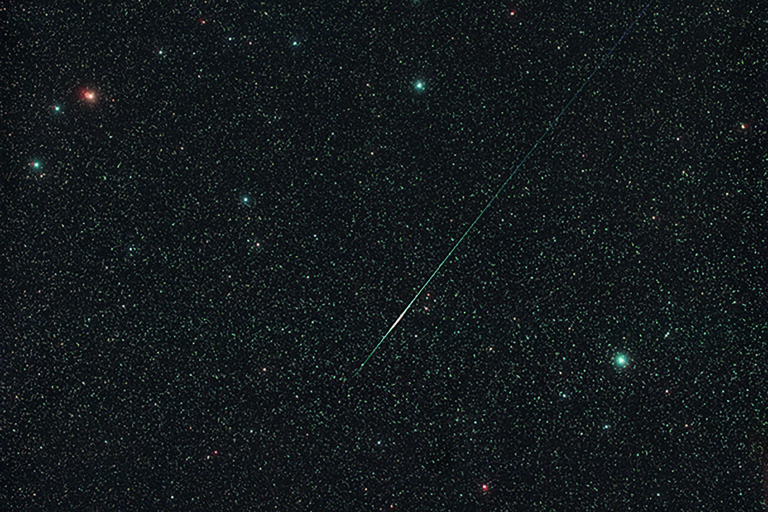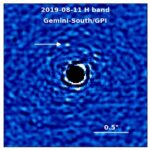Now Reading: Caught in the current of the wonderful Whirlpool
-
01
Caught in the current of the wonderful Whirlpool
Caught in the current of the wonderful Whirlpool
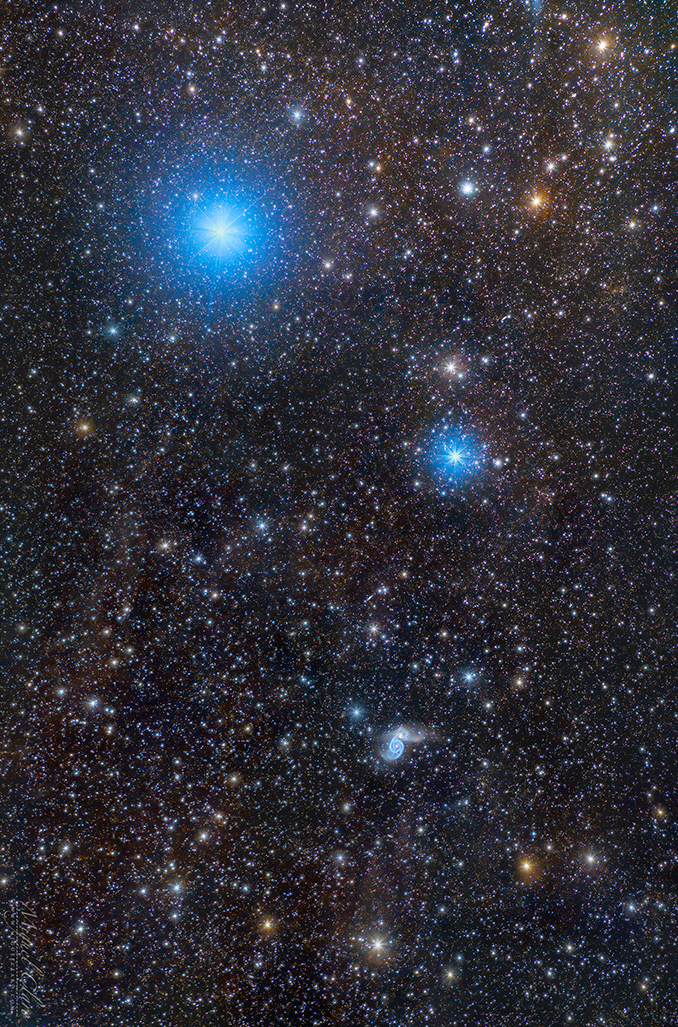
Messier 51, universally known as the Whirlpool Galaxy is one of the most photogenic galaxies of all
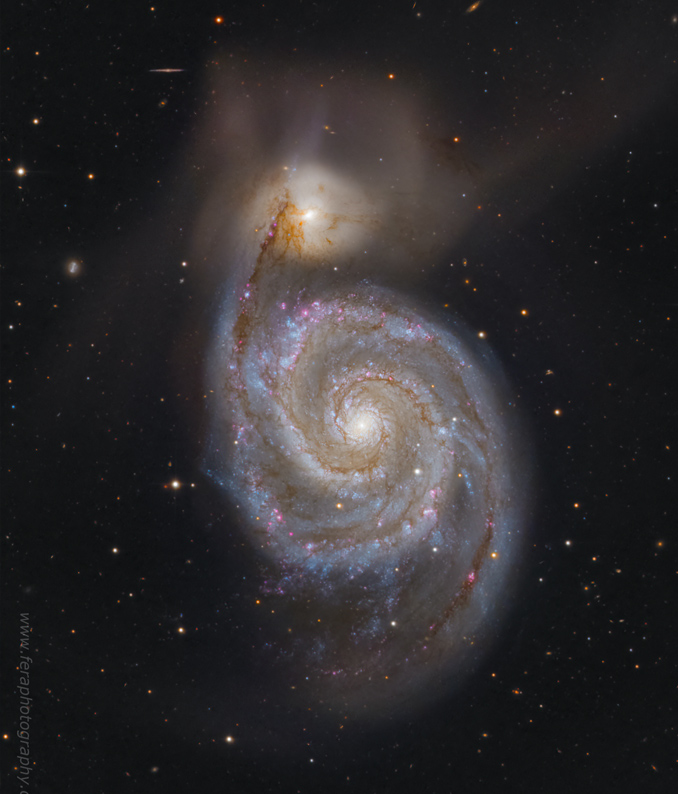
Messier 51 (NGC 5194) in Canes Venatici is the archetypal face-on spiral galaxy. Aptly named and very well known as the Whirlpool Galaxy, this magnificent object has few rivals across the entire sky and, if the sheer volume of images received at Astronomy Now headquarters over recent years is any indicator, only mighty Messier 31 in Andromeda is as popular.

The Whirlpool was discovered by Charles Messier in 1773 and the most famous observations of it were made by William Parsons, the Third Earl of Rosse, who was the first to confirm its majestic spiral structure when observing through the 72-inch ‘Leviathan of Parsonstown‘ at Birr Castle in Ireland. A few years earlier, in 1833, John Herschel saw ‘a very bright round nucleus surrounded at a distance by a nebulous ring’; this observation is regarded as the first hint of the spiral nature of the Whirlpool.
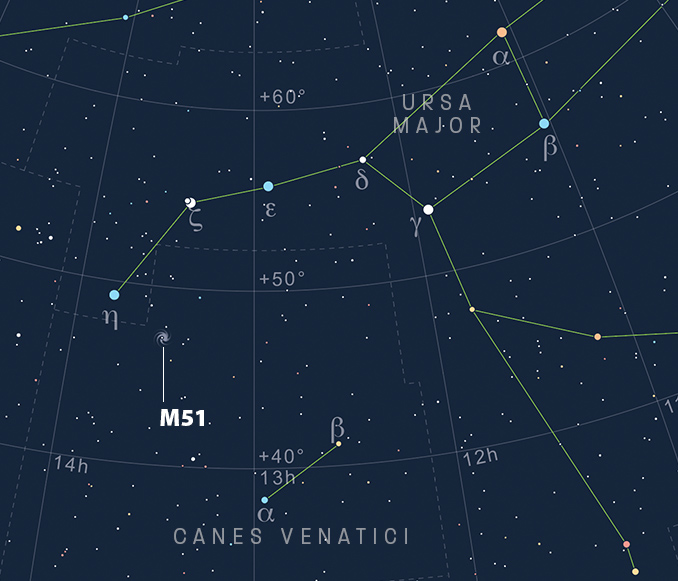
Messier 51 lies close to us in cosmological terms, a mere 23 million light years away. It’s not a particularly large galaxy; with a diameter of 87,000 light years, it’s smaller than our own Milky Way Galaxy. Advantageously, Messier 51 is presented face-on to our line of sight, giving us a bird’s-eye view of its pronounced and graceful ‘grand design’ spiral arms, which are lit-up by young, hot stars clusters and pinky-red H-II regions that formed as recently as 10 million years ago.
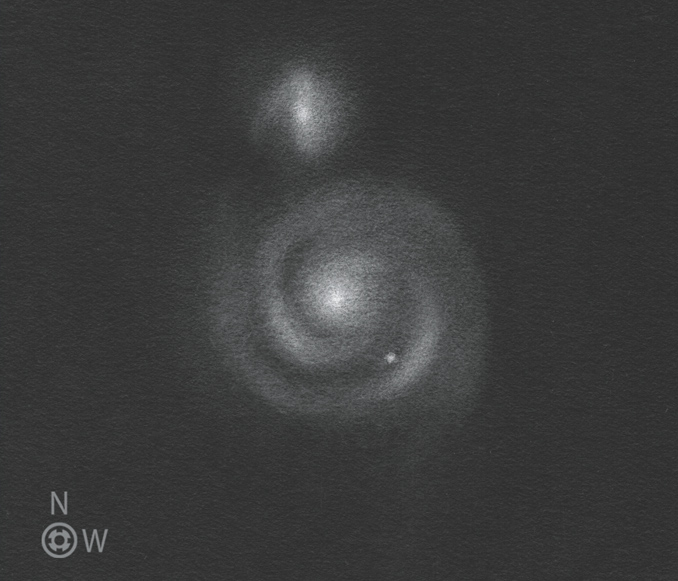
Messier 51 has a smaller, interacting companion galaxy, NGC 5195 (discovered by Pierre Méchain in 1781; Messier saw just the brighter of the two cores [M51]), which lies immediately north and has a highly inclined orbit around M51. Bouts of enhanced star-formation are being triggered by the close approaches, the last of which is thought to have occurred 70 million years ago. NGC 5195 is now receding from M51 and is estimated to lie 500,000 light years behind it.
Deep amateur images show M51’s prominent north-eastern arm in front of NGC 5195, bisecting the smaller galaxy. They also show plumes of material emanating from NGC 5195, tidal tails formed from stars being flung into eccentric orbits taking them far away from the galaxy.

The Whirlpool shines at magnitude +8.1 and spans 11’ x 8.7’. It’s not too hard to track it down; from Alkaid (eta [η] Ursae Majoris, magnitude +1.8, the end star of the Plough’s handle) sweep just over two degrees west to locate 24 CVn (+4.7) and then head two degrees south-south-west to land on M51. Messier 51 lies in the far northern sky and is circumpolar from the UK. At the beginning of May, it culminates at the zenith at 2am BST (01:00 UT).
M51’s spiral arms are of low surface brightness, rendering them harder to spot in a hazy, moonlit or moderately light-polluted sky. On a good night from a suburban location, M51 can be seen through a small telescope, while at a semi—rural site it can be captured in a humble pair of 10 x 50 binoculars as a small hazy patch. Some spiral structure should start to materialise through a 250mm (10-inch) telescope.
Stay Informed With the Latest & Most Important News
Previous Post
Next Post
-
 012024 in Review: Highlights from NASA in Silicon Valley
012024 in Review: Highlights from NASA in Silicon Valley -
 02Panasonic Leica Summilux DG 15mm f/1.7 ASPH review
02Panasonic Leica Summilux DG 15mm f/1.7 ASPH review -
 03From Polymerization-Enabled Folding and Assembly to Chemical Evolution: Key Processes for Emergence of Functional Polymers in the Origin of Life
03From Polymerization-Enabled Folding and Assembly to Chemical Evolution: Key Processes for Emergence of Functional Polymers in the Origin of Life -
 04How New NASA, India Earth Satellite NISAR Will See Earth
04How New NASA, India Earth Satellite NISAR Will See Earth -
 05And Thus Begins A New Year For Life On Earth
05And Thus Begins A New Year For Life On Earth -
 06Astronomy Activation Ambassadors: A New Era
06Astronomy Activation Ambassadors: A New Era -
07SpaceX launch surge helps set new global launch record in 2024












